
PRESENTS
Our Family Military
Service History


The members of our family have been to war and have also been in the Canadian and United States Military Forces in time of peace. Below is a short History of each family member who has served in the military.
The four Knight brothers were all members of the Canadian Scottish Regiment (Victoria, BC) for many years. Donald and Allen were in the pipe band and served as first-aid attendants during the Normandy Invasion. On D-Day June 6 1944, Allen was attached to 'C' Company, which landed on to the left-side of Juno Beach (with the Winnipeg Rifles) and Donald was with 'D' Company which landed on the right of Juno Beach near Chateau Vaux. Rowland was a Sergeant-Major with Support Company during the invasion of Normandy. The Canadian Scottish were part of the 3rd Canadian Division (7th Brigade). Frank was serving with the Toronto Scottish Regiment, part of the 2nd Canadian Division, during the invasion and remained with them to the end of the war. He landed in France in July 1944.
All four brothers returned safely after the war, but Rowland, Donald and Frank were slightly wounded during the fighting. Donald actually found and gave first aid assistance to his brother Rowland during the Normandy invasion.
The Family Military History

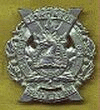
Francis E. Knight, also known as "Dink", continued his military career after the war. He was a Pipe Major in the Canadian Scottish for many years. He retired with the rank of Chief Warrent Officer in 1973. Frank was considered to be one of the finest pipers in Canada.
He was awarded 6 war medals:
1939-45 Star
France and Germany Star
Defence Medal
Canadian Volunteer Service Medal and clasp
War Medal (1939-45)
Efficiency Medal
He was also awarded:
The Canadian Centennial Medal (1967)
Queen's Silver Jubilee Medal (1977)
Canadian Forces Decoration, with bar.
His most prestegious medal was awarded in 1972 when he was appointed:
Member of the Order of Military Merit
(this is the military equivalent of the Order of Canada). Frank was the first Canadian military musician named to the MMM.
He passed away in 1993.

Rowland (Rolly) A. Knight was a CSM in the Canadian Scottish Regiment.
He earned 6 war medals:
1939-45 Star
France and Germany Star
Defence Medal
Canadian Volunteer Service Medal and clasp
War Medal (1939-45)
Efficiency Decoration Canada.
He passed away in 1998.

Donald (Donny) D. Knight was a member of the Canadian Scottish Regiment.
He was awarded 6 war medals:
1939-45 Star
France and Germany Star
Defence Medal
Canadian Volunteer Service Medal and clasp
War Medal (1939-45)
Efficiency Decoration Canada
He was also "Mentioned in Dispatches for devotion to duty" in 1944.
He passed away in 2002.

Allen (Ally) M. Knight was a member of the Canadian Scottish Regiment.
He won 5 war medals:
1939-45 Star
France and Germany Star
Defence Medal
Canadian Volunteer Service Medal
War Medal (1939-45)
He passed away in 2009.


Patrick (Bud) A. Knight served in the Merchant Marine of Canada, Royal Canadian Navy and the Canadian Army in the Tank Corps. He saw active service in Korea in 1952-53 with the Lord Strathcona's Horse (Royal Canadian) and remained in the service from 1945 to 1987. He retired from the Canadian Forces with the rank of Sergeant, but kept his interest in the military active by obtaining his Commission as an Officer in the Reserve Air Force. He left the Reserves with the rank of Captain, after serving several years as an instructor with an Air Cadet Unit. He also played in a local pipe band.
His decorations include:
Korean Service Medal
Canadian Volunteer Service Medal (Korea)
United Nations Service Medal (Korea)
Canadian Forces Decoration, with 2 bars
He passed away in 2011.

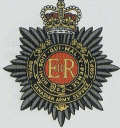


Alexander (Alex) D. Knight Jr. served 3 years with the (regular) Royal Canadian Air Force (1951-1954). He then served with military (reserve) trumpet bands of the Royal Canadian Army Service Corps from 1958-1964, the Royal Canadian Engineers from 1964-1966 and the Royal Canadian Corps of Signals (Toronto Signals Trumpet Band) from 1966-1978. He achieved the rank of (honourary) Warrant Officer 2 and was the vice-president and business manager of the Sigs Band for several years.
He was awarded one medal:
Canadian Forces Decoration


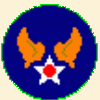

Earl (Mac) R. McIver started his military career in the Canadian Scottish where he served for 2 years. His ranks were private and corporal. He then joined the United States Army and later transferred to the U.S. Air Force from which he retired with the rank of Major after 26 years and 2 months service. He served in Guam during WWII and in post-war England. He also served in Korea. During his military career he was promoted through the ranks from Private to Major.
His Army and Air Force decorations are:
Bronze Star Medal
US Army Conmendation Medal
US Air Force Commendation Medal
Enlisted Good Conduct Medal
American Defense Medal
American Campaign Medal
Asiatic-Pacific Campaign Medal, with 3 Battle Stars
WWII Victory Medal
National Defense Service Medal
Korean Service Medal, with 2 Battle Stars
Armed Forces Reserve Medal
United Nations Service Medal (Korea)
He also received the following Service Decorations:
Presidential Unit Citation, with 1 Cluster
Outstanding Unit Citation
Longlvity Service award, with 5 clusters
Korean Presidential Unit Citation
He passed away in 2011.

Alma A. Goodwin (nee McIver) served in the Royal Canadian Navy during WWII.
She received 2 medals:
Canadian Volunteer Service Medal
War Medal (1939-45)
She passed away in 2018
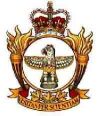
Donna J. Smythe (nee Knight) joined the Canadian Forces in August 1976 and served in the Military Police, stationed in North Bay ON. She left the service in Jan 1979.

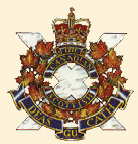
The following are the Canadian Scottish Regiment Second World War Battle Honours:-
| NORMANDY LANDING | PUTOT-EN-BESSIN | CAEN | The Ome | FALAISE | The Laison | Calais, 1944 | The Scheldt | LEOPOLD CANAL | Breskens Pocket | THE RHINELAND | Waal Flats | MOYLAND WOOD | The Rhine | EMMERICH-HOCH ELTEN | DEVENTER | Wagenborgen | North-West Europe, 1944-45 |
Canadian Scottish Regiment on D-Day
Canadian Scottish Regiment was from Victoria, British Columbia. For the initial D-Day assault, 'C' Company of the Canadian Scottish was attached to the Royal Winnipeg Rifles to extend the right flank and knock out a 75mm gun emplacement three quarters of a mile west of Courseulles.
'C' Company commanded by Major D.G. Crofton, landed at about 0750 hours and came under machine gun fire and mortar fire as they raced across the 75 - 100 yards of beach. They found their targeted pillbox already demolished by the naval bombardment. They moved onto their second objective, the Chateau Vaux. The Scottish stormed the Chateau and tossed several hand grenades inside. A group of dispirited Germans quickly surrendered.
Lieut. Schjelderup's platoon, followed by company headquarters, pressed forward along the centre, up the road to Vaux and then through the tree-filled gulley towards the open fields beyond. Then the platoon attacked three machine gun posts, one after another. It was grim going, but not a man faltered. The platoon took about fifteen prisoners, one of whom led the assault troops through a heavily mined area in the gulley. Once through the minefield, the platoon started out across the fields in extended formation, moving through the tall grain towards the gap between Ste.Croix-sur-Mer and Banville. The other platoons came up on the flanks, closing up on either side of company headquarters towards the tip of the woods.
The remaining Can Scots companies came ashore shortly before 0900 under sporadic mortar fire. The beach exits were not complete and there was scattered resistance behind the beaches. It took the Can Scotts one hour to clear and move past the beach. 'B' Company, commanded by Major R.M. Lendrum, struck inland across the fields between La Velette and Graye-sur-Mer, along the low ground bordering the river Seulles towards Amblie. 'A' Company, 'D' Company and Battalion Headquarters assembled at La Valette before moving inland.
A German 88-mm gun camouflaged in a hay stack, began firing and destroying vehicles as they moved off the beach. Major Plows commanding officer for 'A' Company ordered Lieutenant Bernie Clarke's platoon to take out the dangerous gun emplacement. Clarke's classic reply was "Who? Me?", and he immediately set out to clear up the spot. They crawled up a knoll to within 75 yards of the position, nabbed several Germans, and then raced in. It turned out to be a gun emplacement encased in concrete with hay piled on its roof for camouflage. A door leading into the emplacement was pulled open and someone threw in a grenade. That did the trick. So quick and sudden was the Canadian action that about fifty German soldiers came out of their slit trenches - all surrendering. It was at this point that 'A' Company's second in command, Captain William H.V. Matthews came running up, asking Clarke, "What the hell are you trying to do, win the VC?"
The Vaux and Ste. Croix area was the headquarters for the German 726 Regiment's 2nd Battalion. The Winnipeg Rifles encountered strong opposition in Ste. Croix and the beachhead was in danger of being overrun by the Germans in this area. The Can Scots 'A' and 'C' Companies were sent to support the Winnipeg Rifles in Ste.Croix-sur-Mer.
Lieut. Schjelderup: "An L.M.G. opened up from about 150 yards away. We hit the dirt…There was only one course of action and to a man the platoon rushed the enemy positions. It was a bitter encounter with much hand-to-hand fighting. Enemy supporting fire from the area on the northern outskirts of Ste. Croix and mortar fire from Ste. Croix made our task more difficult".
Artillery fire was brought down on the enemy positions, and with supporting tanks the Winnipegs took the task of stamping out the remaining resistance. The Can Scotts 'A' and 'C' Companies pushed forward towards Colombiers-sur-Seulles. 'D' Company commanded by Major G.T. MacEwan, moved one platoon each up to Pont de Reviers and Colombiers on the left, and ran into Germans exiting from Ste. Croix. Shooting up the retreating vehicles the Can Scots took many prisoners here.
'B' Company on the far left, found Amblie clear of the enemy and continued on across the open fields and up the slope overlooking the valley of the Mue River. About four-thirty in the afternoon, after crossing the river Seulles at Colombiers, Lieutenant-Colonel Fred Cabeldu, reported to Brigade Headquarters that the battalion had reached 'Elm', the code name for the Creully-Pierrepont road located more than four miles directly inland from the beaches.
'A' and 'D' companies passed through Pierrepont and moved to the front. Their progress was slowed as they fought through scattered mortar and machine gun positions and flushed out German stragglers along the way. 'A' Company marched towards Camilly and made contact with 'B' Company at Le Fresne-Camilly. At 17:15 they captured an artillery position of the 109 Artillery Regiment and then occupied the village of Camilly. 'D' Company swung to the right and took up positions in the Cainet - Le Petit Vey area. 'C' Company mounted an attack on an enemy mortar and machine gun position before taking the high ground 1,000 yards south of Cainet.
By nightfall the Canadian Scottish were six miles inland, dug in their forward
positions around Pierrepont and ready for an expected counter-attack.
It was a remarkable achievement for the Can Scots, and said a great deal
for the aggressive leadership of the officers as well as the splendid
spirit of the men. There were many gaps in the ranks and no platoon had
been hit harder than Lieutenant Schjelderup's. He had come ashore with
forty-five men under his command but by the end of the day there were
only nineteen men left and he himself was ordered back to have his wounds
dressed. On D-day the Canadian Scottish had a total of 87 casualties,
but had inflicted heavy losses on the enemy and taken about 200 prisoners.
(Information above from the Juno Beach web site)

This page is part of Knight's Canadian Info Collection
Please visit our other pages
Site © by K.C.I.C. - A. Knight (Webmaster)